| Choose a cookware material that suits the cooking technique. For example, sautéed foods turn out best in pans that transmit heat quickly, braised foods need pans that retain heat over long periods, and you shouldn’t cook white sauces or tomato sauces in unlined copper or aluminum cookware because those ingredients react with the metal. |
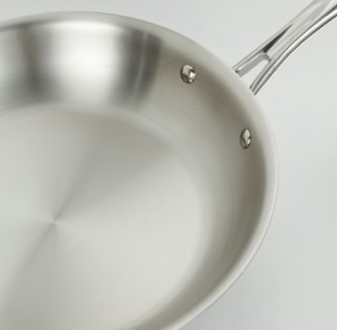
Stainless Steel |
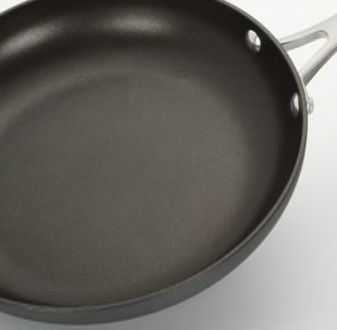
Nonstick |
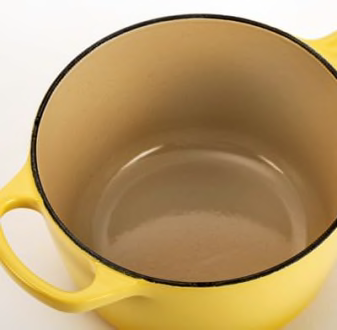
Enameled Cast Iron |
| Long-lasting, classic, uncoated stainless steel is a good choice for browning and braising. Often sold in sets, stainless cookware can be the kitchen workhorse, tackling everything from pickling to pasta sauce.Pros: Durable, easy to care for, does not react with foods. Provides rapid, uniform heating. Often magnetic and compatible with induction cooktops. Dishwasher-, oven-, and broiler-safe (depending on the handle material).
Cons: Sometimes tougher to clean. If you choose uncoated, you might still want a nonstick pan or two, and vice versa. |
Long-lasting, classic, uncoated stainless steel is a good choice for browning and braising. Often sold in sets, stainless cookware can be the kitchen workhorse, tackling everything from pickling to pasta sauce.Pros: Durable, easy to care for, does not react with foods. Provides rapid, uniform heating. Often magnetic and compatible with induction cooktops. Dishwasher-, oven-, and broiler-safe (depending on the handle material).
Cons: Sometimes tougher to clean. If you choose uncoated, you might still want a nonstick pan or two, and vice versa. |
Great for searing, sautéing, browning, and frying, these classic, colorful pieces transition seamlessly from stovetop or oven to your dining table. Covered pieces, like Dutch ovens, are also perfect for braising, stewing, slow-cooking, and roasting meat.Pros: Heats slowly and evenly and retains heat well. Durable coating doesn’t react with acidic ingredients. Dishwasher-safe, corrosion-resistant, and oven-safe to 500° F.
Cons: They’re heavy, and they get even heavier when filled with food. Small handles on a Dutch oven can make transporting it from stovetop to oven a bit cumbersome. Of course, that’s not a problem with the frying pans. Enamel can chip. |
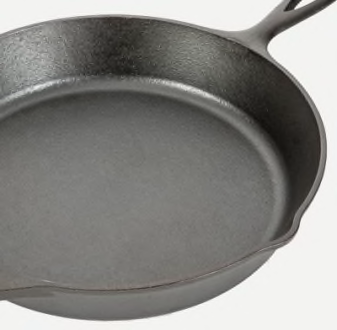
Uncoated Cast Iron |

Carbon Steel & Blue Steel |
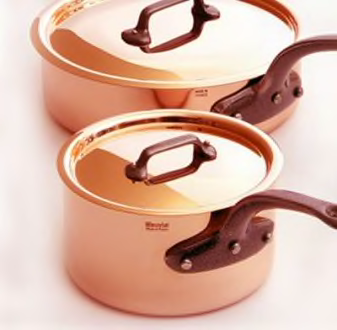
Copper |
|
A great alternative to nonstick cooking surfaces. Lodge, America’s oldest family-owned cookware manufacturer, has referred to its cookware as “natural nonstick.” Cast iron is extremely durable and can be preheated to temperatures that will brown meat. It will also withstand oven temperatures well above what is considered safe for nonstick pans. Pros: Durable, classic. Moves easily from stovetop to oven, so you can sear a roast, for example, and then continue cooking it in the oven. Cons: Some cast-iron pans cook unevenly. Cleaning them can be a challenge at first, but once your pan develops a patina, that task gets easier. You will have to season it with oil from time to time. Not dishwasher-safe. If left unseasoned, they can rust when left in a damp environment. |
These pans are favorites in professional kitchens because they’re extremely durable and efficient, and designed for high-performance cooking. Pros: Ideal for use on any type of cooktop, including induction, and the preferred material for woks, omelet pans, and crepe pans. Wipes clean with paper towels. Lighter than cast iron and can be used in the same way. Cons: Often single-purpose pan design. Not dishwasher-safe. Must be seasoned (rubbed with multiple coats of oil) to avoid rusting. Hand-wash only with mild soapy water and a soft brush. |
Real copper cookware provides quick and even cooking, and cools down quickly, providing maximum control. Look for heavy-gauge copper (1⁄16- to 1⁄8-inch thick) for longest wear. Pros: Ideal for everything from high-heat searing, sautéing, and frying to gently simmering delicate sauces. Offers nice kitchen-to-table presentation. Heavy models with iron or brass handles are safe for oven use. Cons: Pricey. Can dent easily. Copper is a reactive metal, but today’s pans are usually lined with a nonreactive metal such as tin or stainless steel that makes them safe to cook in. Not compatible with induction cooktops. The outside of a copper pan can take on a patina over time that requires removal with a copper cleaner. Hand-wash only. |
Post time: Mar-21-2023




